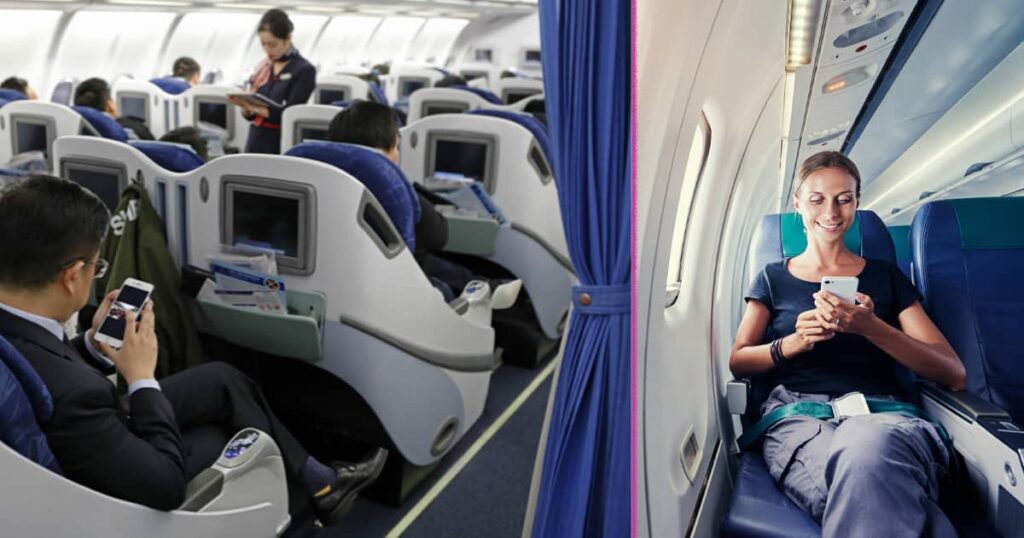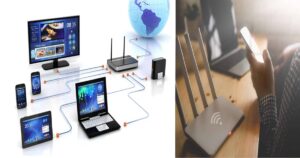
Air travel has become an integral part of modern life, connecting people across the world in a matter of hours. While soaring through the skies, passengers are required to adhere to certain safety guidelines, one of which is turning off electronic devices during specific phases of the flight. This article delves into the reasons behind the seemingly ubiquitous request to power down electronic devices on an airplane, exploring the science, regulations, and potential risks associated with not complying.
Why Do You Have to Turn Off Electronic Devices on an Airplane?
The safety protocols followed on airplanes are meticulous and purposeful, aiming to ensure the well-being of passengers and the integrity of the flight. Powering off electronic devices is a crucial component of these protocols. Let’s delve into the key reasons behind this requirement: why electronic devices turned off airplane

1. Interference with Aircraft Systems
When it comes to the safety of air travel, every precaution matters. One crucial aspect that passengers often wonder about is why they are asked to turn off their electronic devices on an airplane. The answer lies in the potential interference these devices might pose to the aircraft’s systems.
Electronic devices emit electromagnetic signals, which, although usually harmless, have the potential to interfere with the sensitive communication and navigation systems on board. While the probability of this interference is low, airlines prioritize a cautious approach to ensure the utmost safety of all passengers and the aircraft itself.
So, when you’re asked to power down your devices before takeoff and landing, remember that it’s not just a rule – it’s a vital step in ensuring a smooth and secure flight. By following these guidelines, you contribute to a safer travel experience for everyone on board.
2. Radiofrequency Emissions
The fascinating world of electronics brings us convenience and connectivity, but on an airplane, it’s a different story. The request to power off electronic devices is rooted in the potential radiofrequency emissions they generate. These emissions, while imperceptible to us, can have an impact on the aircraft’s communication equipment and even air traffic control.
Modern devices, from smartphones to tablets, emit radiofrequency (RF) signals, which could interfere with the airplane’s delicate communication systems. By turning off these devices, passengers play a pivotal role in preventing any unintentional disruptions to essential communications during the flight.
Remember, it’s not just about complying with regulations – it’s about ensuring a safe and seamless journey for all. So, when you’re soaring through the clouds, powered-down devices on an airplane translate to a more harmonious flight experience for everyone on board.
3. Takeoff and Landing Procedures
As the engines roar and the airplane accelerates down the runway, you’re asked to turn off your electronic devices. Ever wondered why? Takeoff and landing are critical phases of flight, demanding heightened attention and precision. This is precisely why passengers are requested to power down their electronic devices during these times.
The electromagnetic signals emitted by electronic devices can potentially interfere with the aircraft’s systems, especially during these sensitive phases. By turning off devices, you’re helping ensure the focus and stability needed for safe takeoffs and landings.
So, when the cabin crew asks you to stow away your gadgets, it’s not just about rules – it’s about prioritizing the safety of everyone on board. By cooperating with these procedures, you play a vital role in contributing to the overall smoothness and security of the flight.
4. Flight Mode Isn’t Enough
Flight mode – a feature present on nearly every electronic device today – is often misunderstood as a solution to the “power off” requirement on airplanes. However, the truth is that flight mode alone isn’t enough to eliminate potential interference.
While flight mode does disable cellular, Wi-Fi, and Bluetooth connections, electronic devices still emit low-level electromagnetic signals. These signals might not be strong enough to cause significant interference under normal circumstances, but the aviation industry adheres to a stringent “better safe than sorry” approach. By turning off devices completely, you play your part in ensuring that even the slightest chance of interference is mitigated.
Remember, complying with these guidelines isn’t just about convenience – it’s about the safety and seamless operation of the flight. So, when you’re instructed to power down your devices, consider it a small effort toward contributing to a safer and more enjoyable travel experience for everyone on board.
5. Cabin Crew Communication
In the bustling environment of an airplane cabin, communication is paramount to ensuring passenger safety. This is where the request to power off electronic devices comes into play. By reducing potential electronic noise, passengers contribute to the clarity of cabin crew communication.
Cabin crew members are responsible for relaying vital safety information, coordinating actions during emergencies, and ensuring a smooth inflight experience. Electronic devices emit signals that, while usually innocuous, can create unwanted interference and make it challenging for cabin crew to communicate effectively.
When you power off your devices during takeoff and landing, you’re not just complying with regulations – you’re also aiding the cabin crew in performing their duties efficiently. So, next time you’re instructed to stow away your gadgets, remember that your cooperation directly contributes to the overall safety and comfort of your fellow travelers.
6. Preventing Device Malfunctions
Electronic devices have become integral to our daily lives, but when we step onto an airplane, their usage is subject to certain restrictions. Turning off electronic devices isn’t just about potential interference – it’s also about preventing device malfunctions.
The atmospheric conditions and altitude at cruising altitude can create an environment that’s different from the ground. In rare cases, these conditions might lead to malfunctions in electronic devices. By turning off your devices, you minimize the risk of encountering such issues and ensure that your devices remain in optimal working condition.
So, the next time you power down your gadgets before takeoff, you’re not only complying with regulations, but you’re also taking a proactive step toward safeguarding your devices from potential malfunctions during flight. Your cooperation contributes to a smooth and trouble-free journey for everyone on board.
The Science Behind the Regulation
The seemingly routine request to power off electronic devices during a flight isn’t arbitrary – it’s rooted in science and careful research. The Federal Aviation Administration (FAA) and aviation authorities worldwide conduct comprehensive studies to understand the potential impact of electronic emissions on aircraft systems.
While the chances of interference from electronic devices are minimal, regulations prioritize passenger safety above all. Electromagnetic signals emitted by devices have the potential to interfere with an airplane’s sensitive communication and navigation systems. These regulations ensure a precautionary approach, prioritizing a smooth and secure flight experience for all.
So, when you’re asked to turn off your devices, it’s not just a rule to follow – it’s a practice grounded in scientific research to guarantee a safe and uneventful journey for everyone on board.
Understanding Airplane Mode
Airplane mode – a feature synonymous with air travel – is often believed to address the need to power off electronic devices on an airplane. While it does limit certain wireless functionalities, it doesn’t eliminate all emissions, and here’s why.
Electronic devices emit radiofrequency (RF) signals even when in airplane mode, albeit at reduced levels. These emissions, though typically harmless, have the potential to interfere with the aircraft’s systems. While the probability of interference is low, aviation regulations prioritize the safety-first principle.
So, even if you activate airplane mode, turning off your devices entirely remains the recommended practice. This small action goes a long way in contributing to a seamless and secure flight experience for everyone on board.
FAQs
It’s necessary to turn off your phone on a plane because electronic devices emit electromagnetic signals that can potentially interfere with the aircraft’s communication and navigation systems. To ensure the safety and integrity of the flight, passengers are requested to power off their devices during critical phases of the flight, such as takeoff and landing.
If you don’t put your electronics on airplane mode, they will continue to emit radiofrequency signals. While the probability of interference is low, these signals could potentially disrupt the aircraft’s communication equipment and air traffic control communications. It’s a precautionary measure to avoid any unintended disruptions.
Electronic devices are not completely banned on planes, but there are restrictions on their use during critical phases of flight. This is to prevent potential interference with the aircraft’s systems, ensuring safe takeoffs, landings, and overall communication. Adhering to these regulations contributes to the overall safety of the flight.
Using an electronic device on an airplane, especially during takeoff and landing, can potentially interfere with the aircraft’s systems. While the likelihood of interference is low, it’s a precautionary measure to prevent any disruptions to critical communication and navigation systems. Cabin crew members are responsible for enforcing these regulations to ensure a safe flight.
Not turning off electronic devices on an airplane could potentially result in interference with the aircraft’s systems, although the chances are minimal. Additionally, not complying with regulations set by the airline and aviation authorities may lead to disciplinary actions from cabin crew or airline staff. Prioritizing safety and adhering to guidelines is essential.
Generally, electronic devices such as e-readers, tablets, and smartphones are allowed during a flight. However, these devices must be turned off or put in airplane mode during takeoff and landing. Certain medical devices and devices approved by the airline may be exceptions. Always follow the instructions provided by cabin crew members.
Electronic devices emit electromagnetic signals, including radiofrequency emissions. These emissions, though usually harmless, can potentially interfere with the aircraft’s communication and navigation equipment. During critical phases of flight, such as takeoff and landing, interference could disrupt communication between the cockpit and air traffic control. By turning off devices, passengers help mitigate this risk and ensure a safe journey.
No, there are specific phases of flight, such as takeoff and landing, when all electronic devices must be turned off. Once the aircraft reaches a safe cruising altitude, you may be allowed to use certain approved devices with wireless functions disabled.
Conclusion
Turning off electronic devices during flights might feel inconvenient at times, but it’s a small sacrifice for ensuring the safety and smooth operation of the aircraft. The regulations are based on scientific research and prioritizing passenger safety. By adhering to these guidelines, passengers contribute to a secure and enjoyable travel experience for everyone on board.


